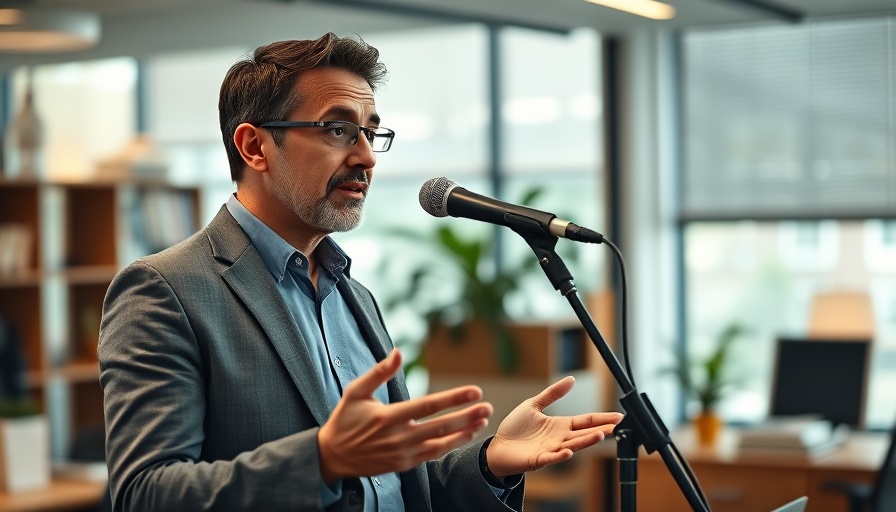
Maximizing Your Google Ads Impact on a Shoestring Budget
In the ever-evolving world of digital marketing, many professionals and business owners find themselves grappling with a common dilemma: how to effectively utilize Google Ads without breaking the bank. With advertising costs on the rise, understanding how to win at Google Ads without a big budget is not only beneficial but essential for small businesses and entrepreneurs looking to make their mark.
In 'How to Win at Google Ads Without a Big Budget,' the discussion dives into smart strategies for maximizing ad impact, exploring key insights that sparked deeper analysis on our end.
Understanding Google Ads: The Basics
Google Ads operates on a pay-per-click (PPC) model, where advertisers bid on keywords to have their ads displayed in search results. To win without a large budget, start by focusing on long-tail keywords—specific phrases that tend to have lower competition and can provide a higher conversion rate.
For example, instead of targeting the broad term "running shoes," consider something more niche like "best running shoes for flat feet." This strategy not only decreases costs but also attracts a more relevant audience who is more likely to convert.
Leverage Data-Driven Insights for Better ROI
Analytics plays a crucial role in optimizing your campaigns. Using tools like Google Analytics, you can gain insights into what works and what doesn’t. Monitor performance metrics such as click-through rate (CTR) and conversion rates to fine-tune your approach. A/B testing different ad copies and landing pages can also lead to improved results.
Consider this: a well-optimized campaign can reduce your cost per acquisition significantly, allowing you to stretch your marketing budget further.
Utilizing Remarketing Strategies
Remarketing is another powerful tool to maximize your Google Ads effectiveness. By targeting users who have previously visited your website, you can create ads that remind them of your services or offerings, leading to increased conversions. This is particularly effective because these users already show interest in your brand, making it less expensive to convert them.
Content Marketing Synergy: Boosting Visibility
A strong content marketing strategy can complement your Google Ads efforts. Create valuable content—whether it’s a blog post, video, or social media update—that showcases your expertise. This not only improves organic reach but also supports your Google Ads campaigns by providing landing pages that keep users engaged.
For instance, if you’re running ads for outdoor gear, publishing an in-depth guide on "How to Choose the Right Camping Equipment" can attract clicks and improve your ad’s quality score.
The Importance of Landing Page Optimization
The journey doesn’t end when a user clicks your ad. Optimizing your landing pages is crucial for converting clicks into customers. Make sure your landing pages are relevant to the ad and include clear calls to action (CTA). Simplifying forms and ensuring a mobile-friendly design can also enhance user experience, leading to higher conversion rates.
Marketing Automation: Your Budget-Friendly Ally
Incorporating marketing automation can further maximize your efficiency. Tools available today can help with everything from email marketing campaigns to social media management, freeing up your time to focus on strategy and creative development. Automating repetitive tasks means you can better allocate your limited budget to high-impact strategies.
The Power of Social Media in Google Ads
Simply put, engaging with your audience on social media can enhance your Google Ads campaigns. Use platforms like Facebook, Instagram, and LinkedIn to build brand awareness and encourage shares, making your ads more visible. Moreover, fostering an active presence helps to create a loyal customer base that may lead to organic growth, reducing your reliance on paid strategies.
Conclusion: Taking Action to Optimize Your Google Ads
Winning at Google Ads without a large budget is entirely feasible with the right strategies. By focusing on niche keywords, leveraging data analytics, employing remarketing, and integrating content marketing, you can effectively improve your ROI. Moreover, optimizing your landing page can drastically increase your conversion rates while marketing automation tools can streamline your processes.
As you embark on this journey, remember that success requires continuous testing and learning. Embrace tools and techniques to refine your marketing strategies, and you will soon see the fruits of your efforts. If you’re ready to elevate your marketing game, start implementing these strategies today—your budget will thank you!
 Add Row
Add Row  Add
Add 




Write A Comment